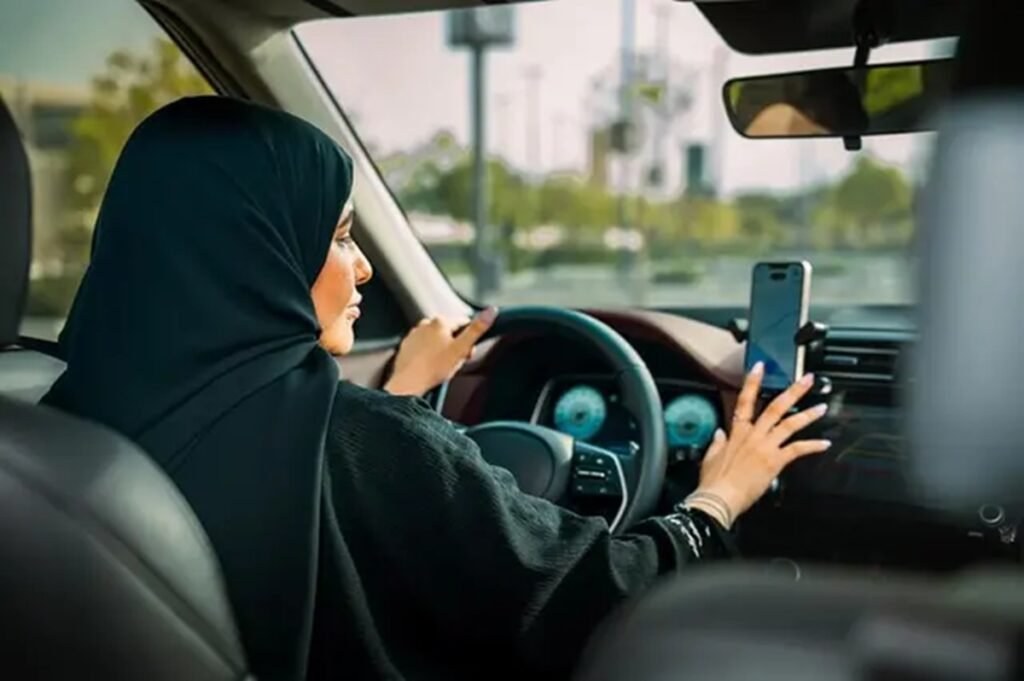In a groundbreaking move that signals a major shift in the transportation sector and women’s empowerment, Uber has launched its new ‘Women Drivers’ feature in Saudi Arabia. This bold initiative aims to offer Saudi women drivers more opportunities while providing female riders the option to choose a female driver for their journey. The introduction of this feature highlights Uber’s commitment to inclusivity, safety, and cultural sensitivity in one of the most conservative societies in the world.
A new chapter for women in Saudi Arabia
For decades, Saudi Arabia was known for its strict social codes, particularly regarding women’s mobility. Until 2018, women in Saudi Arabia were not allowed to drive. The historic lifting of this ban was a significant step toward gender equality and opened doors for women to become more independent.
However, cultural attitudes and concerns over safety have still held many women back from fully embracing driving or using ride-hailing services freely. The launch of Uber’s ‘Women Drivers’ feature is designed to address these challenges by creating a safer and more comfortable environment for both female drivers and passengers.

How the ‘Women Drivers’ feature works
The new feature allows female riders in Saudi Arabia to select the option to be picked up by a woman driver. This optional setting can be activated within the Uber app. Once activated, the app will prioritize matching the rider with a female driver whenever available.
This option not only empowers female passengers to travel more confidently but also encourages more women to sign up as drivers, knowing they can serve primarily female customers if they prefer.

Empowering women drivers
The introduction of this feature is more than just a technical update — it represents a broader effort to empower Saudi women economically. By providing a platform where women can work flexibly and safely, Uber is helping them enter the workforce on their own terms.
Many Saudi women, especially those who may not be able to work full-time jobs due to family responsibilities, can now consider driving as a viable income source. The ability to set their own hours, choose preferred passenger demographics, and operate independently offers an unprecedented level of autonomy.
In interviews, several women drivers have expressed that this feature makes them feel more secure and valued. It also gives them a sense of contributing positively to the transformation happening in their country.
Responding to cultural sensitivities
Saudi Arabia is a unique market where cultural and religious norms play a significant role in everyday life. The country has seen rapid changes in recent years, but many traditions remain deeply rooted.
Understanding this, Uber’s ‘Women Drivers’ feature was designed after thorough research and consultations with local stakeholders. The option respects conservative preferences, especially among women who might not feel comfortable riding with male drivers.
It also caters to families who prefer their daughters, sisters, or wives to ride with female drivers for privacy and security reasons. By offering this choice, Uber demonstrates cultural respect while simultaneously promoting progressive values.
Positive reactions from the community
Since the announcement, the reaction among Saudi women has been overwhelmingly positive. Many see this as another major milestone in the gradual empowerment of women across the Kingdom.
Social media platforms have been flooded with supportive comments and personal stories from women who are excited to either join Uber as drivers or start using the service more confidently as riders.
Government officials and women’s rights advocates have also praised the move, noting it aligns with Saudi Arabia’s Vision 2030 — a comprehensive plan to diversify the economy and enhance women’s participation in all sectors of society.

The role of Vision 2030
Saudi Arabia’s Vision 2030 initiative, spearheaded by Crown Prince Mohammed bin Salman, aims to transform the country socially and economically. One of the key goals is to increase women’s participation in the workforce from 22% to 30% by 2030.
The ‘Women Drivers’ feature directly supports this vision by opening up new job opportunities and providing a platform for financial independence. This effort contributes not only to individual empowerment but also to broader economic diversification and growth.
Safety as a core focus
Safety is at the heart of this new feature. Uber has introduced several new measures to ensure that female drivers feel secure on the road.
Enhanced security features include:
- Real-time trip tracking: Family and friends can track trips live via the app.
- Emergency button: An in-app feature to quickly contact authorities if needed.
- 24/7 support: Dedicated support lines for drivers and riders.
- Anonymous feedback: Riders and drivers can share feedback without disclosing personal details.
These features were designed after analyzing feedback from female drivers and riders worldwide and adapted to meet the specific needs of the Saudi market.
Economic impact
The launch of ‘Women Drivers’ also has significant economic implications. The gig economy has become a vital part of Saudi Arabia’s job market, and empowering more women to join this sector helps drive economic inclusivity.
As more women take up driving, their income not only benefits their households but also stimulates local spending and overall economic activity. Many women who might have been economically dependent now have the chance to support themselves and contribute to their family finances.
This change could inspire future generations to view work outside the traditional home environment as not just possible but empowering and respectable.
Overcoming barriers and stereotypes
Although the initiative has been celebrated, there are still challenges to overcome. Deep-seated stereotypes and societal pressures may discourage some women from driving or working in public spaces.
Uber has worked to tackle these barriers through community outreach programs, workshops, and partnerships with local organizations aimed at educating and encouraging women.
Stories shared by early adopters show how these efforts have already started to change perceptions. Women who have started driving often become role models in their communities, inspiring others to follow.
Global implications and future expansion
Saudi Arabia is not the only country where Uber has experimented with women-specific features. Similar initiatives have been tested in Egypt and India, where cultural and safety concerns also affect women’s mobility.
The success of this program in Saudi Arabia could serve as a model for other markets facing similar challenges. If the feature continues to receive positive feedback and strong adoption, we might see Uber expand this concept to other conservative regions.

The voices behind the wheel
Hearing from the women themselves adds a powerful dimension to this story. Many Saudi women who have become drivers under this feature share stories of newfound independence, pride, and joy.
For instance, Fatima, a 32-year-old mother of two from Riyadh, shared that driving for Uber has allowed her to save for her children’s education. “I never imagined I could earn money while also taking care of my family. Now, I feel I have a purpose beyond the home,” she said.
Similarly, Aisha, a university student, uses driving as a flexible part-time job to support her studies. She feels safer knowing she can choose to drive only female passengers.
These stories highlight the profound social impact of the ‘Women Drivers’ feature beyond just economic benefits.
Uber’s vision for the future
With the successful launch of this feature, Uber has signaled that it is not just a ride-hailing service but also a partner in social transformation. By integrating cultural understanding with technological innovation, Uber is setting an example of how global companies can adapt to local markets.
Uber has stated that it will continue to refine and improve this feature based on feedback from users and drivers. The company is also looking into additional services and training programs to further support women drivers in the Kingdom.
Conclusion: Driving change beyond the roads
Uber’s ‘Women Drivers’ feature in Saudi Arabia is more than just a new app setting — it is a statement of empowerment, inclusivity, and progress. By enabling more women to take the wheel, both literally and figuratively, Uber is contributing to a broader movement toward gender equality and economic participation.
This initiative exemplifies how thoughtful technological solutions can bridge cultural gaps and create new opportunities in even the most traditional societies.
Saudi Arabia stands at a crossroads of tradition and transformation. With initiatives like this, women in the Kingdom are not just passengers in this journey — they are driving it forward.
Do follow UAE Stories on Instagram
Read More: Etihad Airways passenger growth: 1.8 million in June, 2025 traffic tops 10 million














